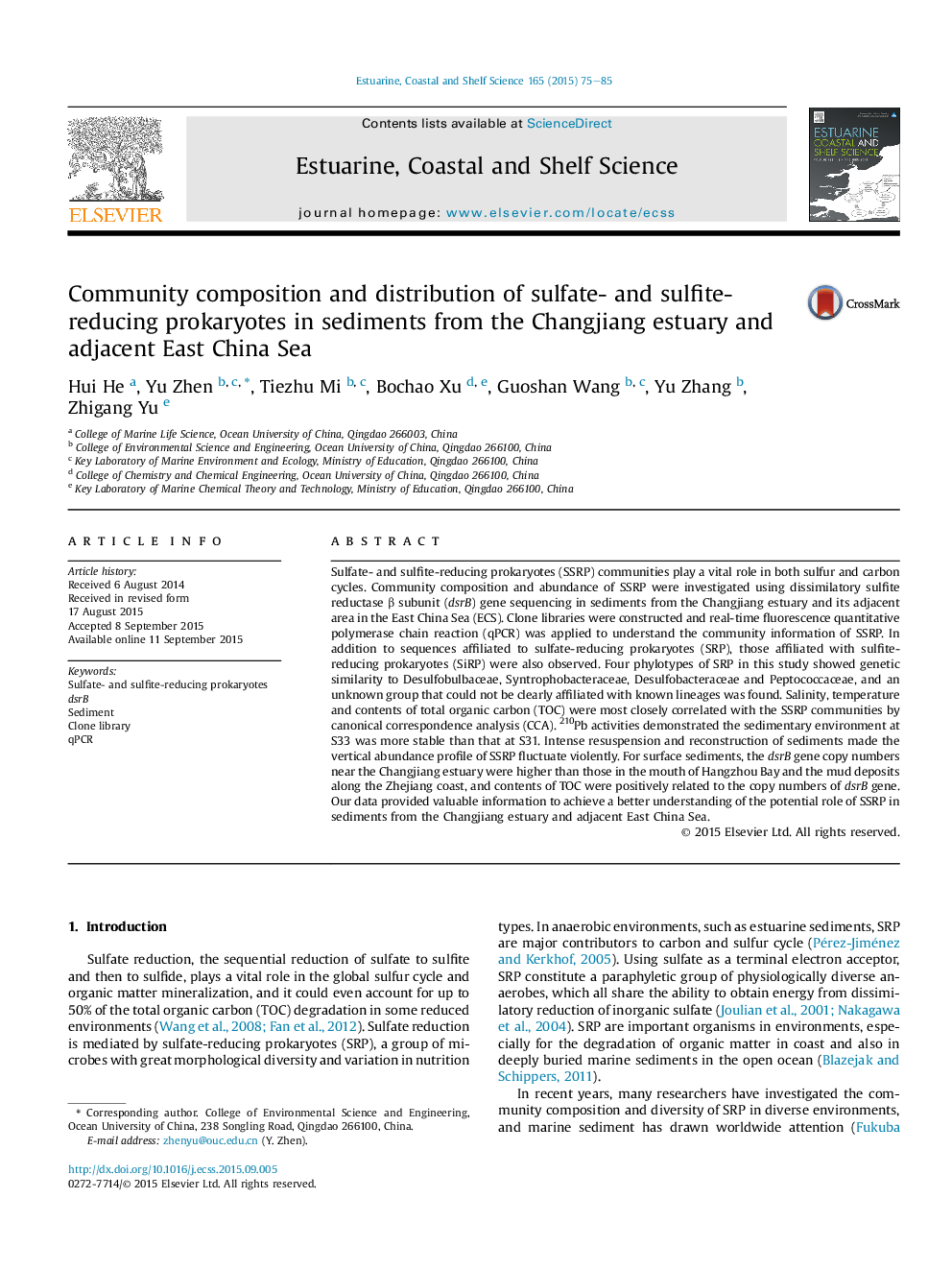| Article ID | Journal | Published Year | Pages | File Type |
|---|---|---|---|---|
| 6384611 | Estuarine, Coastal and Shelf Science | 2015 | 11 Pages |
Abstract
Sulfate- and sulfite-reducing prokaryotes (SSRP) communities play a vital role in both sulfur and carbon cycles. Community composition and abundance of SSRP were investigated using dissimilatory sulfite reductase β subunit (dsrB) gene sequencing in sediments from the Changjiang estuary and its adjacent area in the East China Sea (ECS). Clone libraries were constructed and real-time fluorescence quantitative polymerase chain reaction (qPCR) was applied to understand the community information of SSRP. In addition to sequences affiliated to sulfate-reducing prokaryotes (SRP), those affiliated with sulfite-reducing prokaryotes (SiRP) were also observed. Four phylotypes of SRP in this study showed genetic similarity to Desulfobulbaceae, Syntrophobacteraceae, Desulfobacteraceae and Peptococcaceae, and an unknown group that could not be clearly affiliated with known lineages was found. Salinity, temperature and contents of total organic carbon (TOC) were most closely correlated with the SSRP communities by canonical correspondence analysis (CCA). 210Pb activities demonstrated the sedimentary environment at S33 was more stable than that at S31. Intense resuspension and reconstruction of sediments made the vertical abundance profile of SSRP fluctuate violently. For surface sediments, the dsrB gene copy numbers near the Changjiang estuary were higher than those in the mouth of Hangzhou Bay and the mud deposits along the Zhejiang coast, and contents of TOC were positively related to the copy numbers of dsrB gene. Our data provided valuable information to achieve a better understanding of the potential role of SSRP in sediments from the Changjiang estuary and adjacent East China Sea.
Keywords
Related Topics
Physical Sciences and Engineering
Earth and Planetary Sciences
Geology
Authors
Hui He, Yu Zhen, Tiezhu Mi, Bochao Xu, Guoshan Wang, Yu Zhang, Zhigang Yu,
